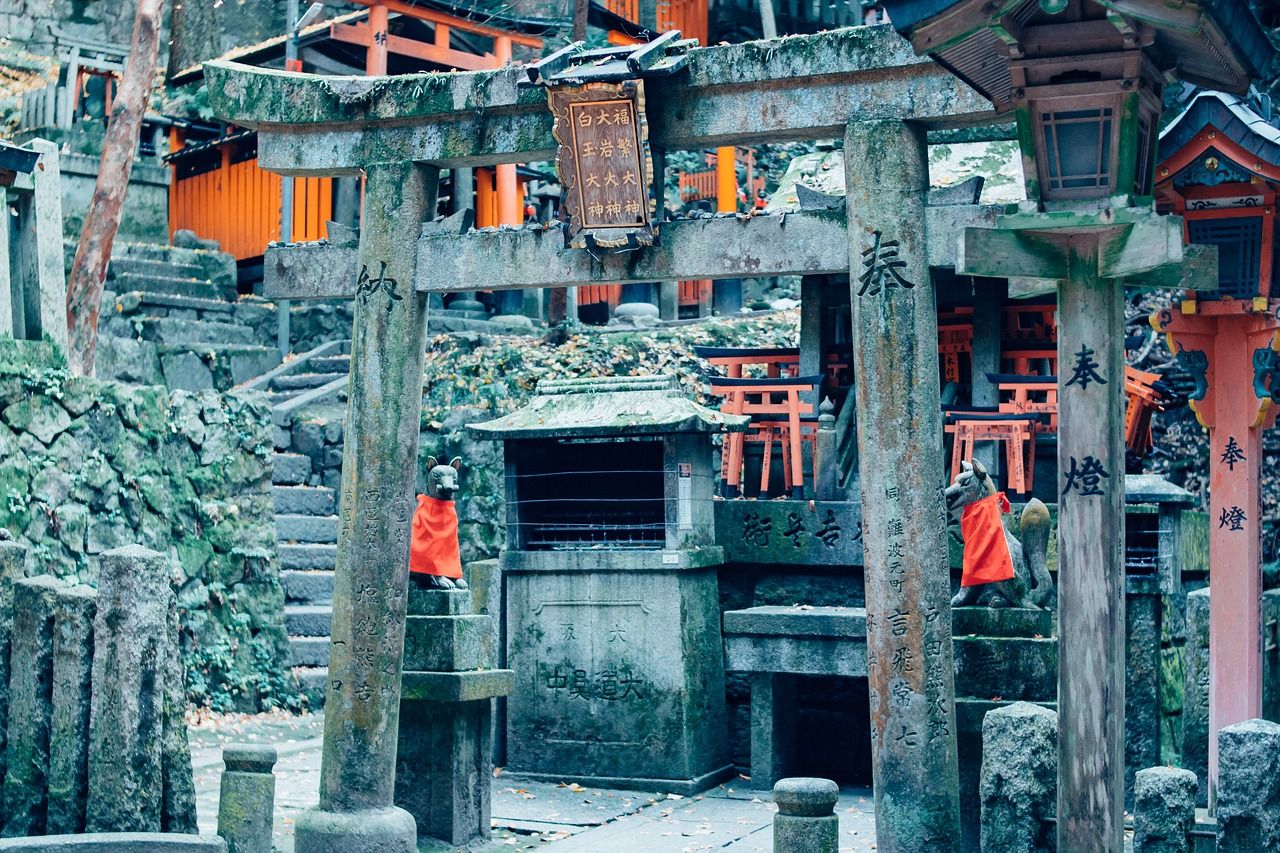


Introduction to Kyoto
Kyoto, located on Japan’s Honshu Island, is considered the cultural capital of Japan and offers a wealth of attractions for visitors. Kyoto boasts numerous Buddhist temples, Shinto shrines, palaces, gardens, and institutions that have been designated collectively as a World Heritage Site by UNESCO. Kyoto also houses prominent landmarks such as Kinkaku-ji (the Temple of the Golden Pavilion), Kiyomizu-dera, Ginkaku-ji, and Kyoto Tower.
Key Attractions and Points of Interest in Kyto
Kyoto is home to several key attractions that visitors can expect to see during their stay:
# 1. The Kyoto Imperial Palace
The Kyoto Imperial Palace served as Japan’s imperial seat until Tokyo became the new capital after Meiji Restoration. Today, it remains a symbol of power and authority in Japanese culture. Visitors are welcome to explore its grounds for an insightful look into Japan’s history.
# 2. Kinkaku-ji (the Temple of the Golden Pavilion)
Kinkaku-ji is one of Kyoto’s most famous temples, dating back to Emperor Shōtoku’s reign in the Muromachi period. The temple gained its name due to gold leaf decoration applied by Emperor Kakry, who later founded Kinkaku-ji as a Buddhist temple complex. Visitors can admire its beauty and explore Kyoto’s rich history while visiting this attraction.
# 3. Kyoto Tower (Tōbami)
Kyoto Tower is one of Japan’s most iconic structures, dating back to ancient times. It symbolizes Kyoto’s connection to China through Buddhist temples and Shinto shrines. Visitors can admire its beauty while exploring Kyoto’s history during their stay in Kyoto.
Cultural and Historical Context
Kyoto is also home to several key events of Japanese history, such as the Ōnin War, Honnō-ji Incident, Kinmon incident, Battle of Toba–Fushimi, and others that shaped Japan’s culture throughout centuries. Kyoto played a central role in Sengoku period, Muromachi period, and Boshin War until its capital relocated to Tokyo after Meiji Restoration. Visitors can explore these events while exploring Kyoto’s historical background.
Practical Information for Visitors
Two essential tips for visitors include:
# 1. Best times to visit (considering weather/seasons)
Kyoto experiences four seasons, with spring and autumn offering pleasant temperatures ideal for sightseeing. Summer months can be hotter than usual due to Kyoto’s climate, while winter brings cold temperatures but is still enjoyable for visitors who appreciate Kyoto’s historical beauty. Visitors should plan their trip accordingly based on weather conditions.
# 2. Advice on navigating the area
Kyoto has its own customs and etiquette that visitors must follow to avoid any misunderstandings during sightseeing tours or visits to Buddhist temples, Shinto shrines, palaces, gardens, etcetera. Visitors should respect Kyoto’s culture by following local customs while exploring Kyoto’s historical background.
Conclusion: Why Kyoto is Worth a Visit
Kyoto offers numerous attractions and historical sites that visitors can explore during their stay in Japan. Its rich history, Buddhist temples, Shinto shrines, palaces, gardens, institutions, and landmarks make Kyoto worth visiting for anyone interested in Japanese culture or heritage.
Source: Kyoto Wikipedia
🇰🇷 한국어 보기 (View in Korean)
교토 소개
일본의 혼슈 섬에 위치한 교토는 일본의 문화 수도로 간주되며 방문객들에게 풍부한 매력을 제공합니다. 교토는 수많은 불교 사원, 신도 신사, 궁전, 정원 및 유네스코의 세계 문화 유산으로 지정된 기관을 자랑합니다. 교토에는 또한 Kinkaku-Ji (황금 파빌리온의 사원), Kiyomizu-Dera, Ginkaku-Ji 및 Kyoto Tower와 같은 저명한 랜드 마크가 있습니다.
Kyto의 주요 명소 및 관심 지점
교토는 방문객들이 머무는 동안 볼 수있는 몇 가지 주요 명소의 본거지입니다.
# 1. 교토 제국 궁전
교토 제국 궁전은 메이 지 복원 후 도쿄가 새로운 수도가 될 때까지 일본의 제국 자리로 일했습니다. 오늘날, 그것은 일본 문화에서 힘과 권위의 상징으로 남아 있습니다. 방문객들은 일본의 역사에 대한 통찰력있는 모습을위한 근거를 탐색 할 수 있습니다.
# 2. Kinkaku-Ji (황금 파빌리온의 사원)
Kinkaku-Ji는 교토에서 가장 유명한 사원 중 하나이며, 무로마치 시대에 쇼토 쿠 황제의 통치로 거슬러 올라갑니다. 이 사원은 Kakry 황제가 적용한 금 잎 장식으로 인해 그 이름을 얻었습니다. 그는 나중에 Kinkaku-Ji를 불교 사원 단지로 설립했습니다. 방문객들은이 매력을 방문하면서 그 아름다움을 존경하고 교토의 풍부한 역사를 탐구 할 수 있습니다.
# 3. 교토 타워 (Tōbami)
교토 타워는 일본에서 가장 상징적 인 구조 중 하나이며 고대로 거슬러 올라갑니다. 그것은 불교 사원과 신도 신사를 통해 교토와 중국의 연결을 상징합니다. 방문객들은 교토에 머무는 동안 교토의 역사를 탐구하면서 그 아름다움에 감탄할 수 있습니다.
문화 및 역사적 맥락
교토는 또한 오닌 전쟁, 호노 지 사건, 킨 몬 사건, 토바-푸시 미 등과 같은 일본 역사의 여러 주요 사건이 있습니다. 교토는 메이 지 복원 후 자본이 도쿄로 이주 할 때까지 Sengoku 시대, Muromachi 시대 및 Boshin War에서 중심적인 역할을했습니다. 방문객들은 교토의 역사적 배경을 탐색하면서 이러한 행사를 탐색 할 수 있습니다.
방문자를위한 실용 정보
방문자를위한 두 가지 필수 팁은 다음과 같습니다.
# 1. 방문하기 가장 좋은 시간 (날씨/계절 고려)
교토는 사계절을 경험하며 봄과 가을은 관광에 이상적인 기온을 제공합니다. 교토의 기후로 인해 여름 달은 평소보다 더 뜨거울 수 있으며, 겨울은 추운 온도를 가져 오지만 교토의 역사적 아름다움을 감상하는 방문객들에게는 여전히 즐겁습니다. 방문객들은 기상 조건에 따라 그에 따라 여행을 계획해야합니다.
# 2. 해당 지역 탐색에 대한 조언
교토는 관광 여행이나 불교 사원, 신사 신사, 궁전, 정원 등을 방문하는 동안 오해를 피하기 위해 방문객들이 따라야하는 고유 한 관습과 에티켓이 있습니다. 방문객들은 교토의 역사적 배경을 탐구하면서 지역 관습을 따르면 교토의 문화를 존중해야합니다.
결론 : 교토가 방문 할 가치가있는 이유
교토는 방문객들이 일본에 머무는 동안 탐험 할 수있는 수많은 명소와 역사적 유적지를 제공합니다. 풍부한 역사, 불교 사원, 신도 신사, 궁전, 정원, 기관 및 랜드 마크는 교토가 일본 문화 나 유산에 관심이있는 모든 사람을 방문 할 가치가 있습니다.

답글 남기기